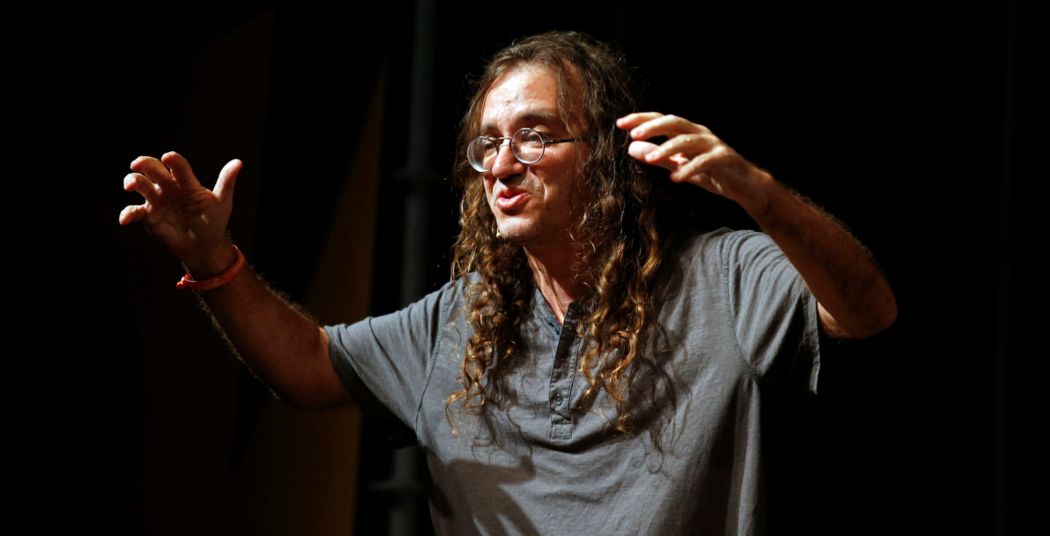
When trying to comprehend AI algorithms, it might be easiest to think of them as little artisan workers. Some have been carefully trained to transcribe speech into text like the scribes of early history, while others spent days (an eternity in Algorithm Years) learning to identify objects in images.
But they’re only good at their one trade—a key reason why Sophia the robot, the first robot citizen, isn’t actually as smart as a human. The company that makes Sophia, Hanson Robotics, has become adept at linking different, highly-specific algorithms like image recognition and speech transcription in a way that mimics what humans might be doing when we hear a question and formulate a response.
To build a better robot, Hanson Robotics needs more and better code. To do this, Hanson executives have launched a side venture that will allow independent coders to be compensated for their AI’s labor, or have their AI trade its own labor in return for work done by other coders’ AIs. Called SingularityNET, it’s a marketplace built on a blockchain, the technology underpinning Bitcoin, that allows AI systems to barter with each other.
“There’s this vastly underutilized collection of AI code out there,” says Ben Goertzel, CEO of SingularityNET and CTO of Hanson Robotics. “It’s a more automated way to take your code, wrap it in an API, and have people pay attention.”
Going off the analogy that AIs are artisan workers, imagine SingularityNET as the virtual village square. Artisans—the AI—barter or exchange money for different services, and it’s all recorded on SingularityNET’s blockchain. For instance, an algorithm that finds objects in video, but cannot process the accompanying audio in a video, might request that task from others on SingularityNET. That request would come with an offer for a portion of the blockchain’s currency, or an equal exchange of its own video analysis services.
Goertzel says the ability to “stack” machine learning algorithms like this, where compute power is bartered like money and decisions are made by constellations of cooperative but disparate algorithms, has the ability to create more robust AI systems. These systems aren’t smarter because the algorithms themselves are more efficient, but because they’re orchestrated and verified by this central blockchain.
Developers today already integrate multiple AI algorithms from cloud service providers like Google, IBM, and Clarifai into their apps and services without a blockchain, but SingularityNET would theoretically allow complex stacks of algorithms to configure themselves. Plus, the entire process would be recorded on a blockchain.
SingularityNET hopes to launch the token—the currency used between AIs called the artificial general intelligence coin—on Nov. 29. As with other initial coin offerings, it’s a largely unregulated way to grab a ton of cash, even if the Kurzweilian branding doesn’t woo independent AI developers..
When trying to comprehend AI algorithms, it might be easiest to think of them as little artisan workers. Some have been carefully trained to transcribe speech into text like the scribes of early history, while others spent days (an eternity in Algorithm Years) learning to identify objects in images.
But they’re only good at their one trade—a key reason why Sophia the robot, the first robot citizen, isn’t actually as smart as a human. The company that makes Sophia, Hanson Robotics, has become adept at linking different, highly-specific algorithms like image recognition and speech transcription in a way that mimics what humans might be doing when we hear a question and formulate a response.
To build a better robot, Hanson Robotics needs more and better code. To do this, Hanson executives have launched a side venture that will allow independent coders to be compensated for their AI’s labor, or have their AI trade its own labor in return for work done by other coders’ AIs. Called SingularityNET, it’s a marketplace built on a blockchain, the technology underpinning Bitcoin, that allows AI systems to barter with each other.
When trying to comprehend AI algorithms, it might be easiest to think of them as little artisan workers. Some have been carefully trained to transcribe speech into text like the scribes of early history, while others spent days (an eternity in Algorithm Years) learning to identify objects in images.
Goertzel says the ability to “stack” machine learning algorithms like this, where compute power is bartered like money and decisions are made by constellations of cooperative but disparate algorithms, has the ability to create more robust AI systems. These systems aren’t smarter because the algorithms themselves are more efficient, but because they’re orchestrated and verified by this central blockchain.